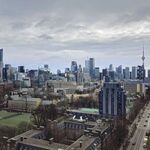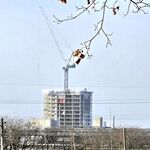I knew you would chime in and I am glad you did. I wish I had been paying more attention 5 or 10 years ago, since it would be nice to know the logic (or lack thereof) that brought us to where we are today.
1. I read that in 2006, converting SRT to Mark 2 was the TTC top priority - then in 2007 everything switched to LRT. I guess they wanted a one-size-fits-all solution to transit - LRT everywhere.
2. There was significant extra closure time predicted for converting the SRT to LRT in 2006. After Transit City and LRT everywhere, the difference in closure time was suspiciously reduced to a minimal amount.
3. Transit City wanted to be at-grade as much as possible to save money. It appears that when about 80% of the Crosstown line became grade separated, nobody looked at the benefits of grade separating the entire line. Smaller tunnels with full subway (as Sheppard) or Skytrain would have reduced the excavation (TBM) costs and also marginally reduced many station depths - even without considering cut-and-cover.
4. Eglinton/Don Mills station appears to have been planned as at-grade. When it was decided to build it underground, a side-of-road alignment appears to not have been considered even though it could reduce the cost of the station and reduce traffic disruption.
5. Many transit City proponents state that LRT is needed at-grade, which spurs development better than underground. This week, the star had an article about how the central portion of Eglinton is already transforming (
http://www.thestar.com/news/transpo...he-eglinton-lrt-will-transform-neighbourhoods).
It seems that the main requirements were to use LRT and to have a least some portions in the median. If the goal was simply to get the best transit bang-for-the-buck, we quite probably could have seen the Skytrain here.
As for cut-and-cover, I would like to know how much less expensive it really is. I would guess that a TBM tunnel is about $100M/km, and each station is about $100M/km, and the track, signals, cars, etc. are $100M/km. Could cut-and-cover save $50 to $100M/km? How about construction time. I would guess that deep cut-and-cover stations needed with TBM would take about 4 years and be located 800m appart. With cut-and-cover, I expect the exacavation is essentially continuous, but lasts maybe half the time. I am not sure that cut-and-cover could have worked in the Central portion, but there are some advantages that appear to never be considered.





